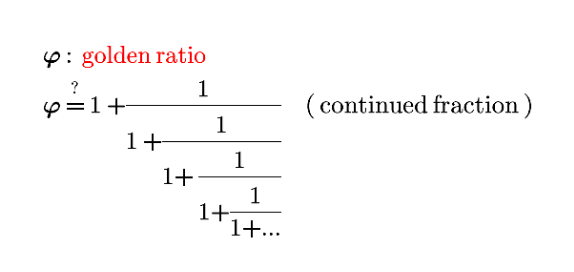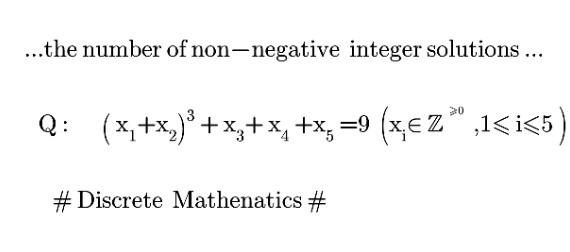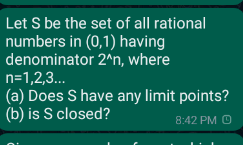
Question and Answers Forum
Set TheoryQuestion and Answers: Page 2













|
Question and Answers Forum |
Set TheoryQuestion and Answers: Page 2 |

|
| Use laws of algebra to prove the following (a)[(B−A)u(A−B)]=[(AuB)−(AnB)] (b)A▽(AnB)=A−B |
| find a solution; e^x = ln(x) |
| a^ 2+2ab+b^ 2 |

|
| 1 : Ω = Σ_(n=1) ^∞ (( (− 1 )^( n) H_( n) )/n^( 2) ) = ? 2 : η (−1 )= ? |
| Q: G( V , E ) is a graph , such that ∣ V (G )∣ = 20 , Δ ( G )= 8 , δ (G )=3 find the value of , q_( max) − q_( min) = ? q = ∣ E (G )∣ |
| If , 7^( n) ≡^(10) 7^( 19) then find the 1st digit of the numer , 8^( n+4) . |
| Let A={1^(p^2 −p) , 2^(p^2 −p) ,..., (p−1)^(p^2 −p) , p^2 −p+1} where p is any prime number Prove that for any value of p, however we split this set into two disjunctive sets, the arithmetic means of all elements of both sets cannot be equal to each other. |

|

|

|
| Evaluate Ω = lim_( n→∞) ( n− Σ_(k=1) ^n cos ( (( (√k))/( n)) ) ) =? |

|
| Find prime numbers of 3 digits such that equal to sum of 3 diffrent numbers of prime |
| ax^2 +bx+c = 0 x = ((−b±(√(b^2 −4ac)))/(2a)) Example: Find the values of x in the equation x^2 +5x+4 = 0 In order to solve for that, let′s first take a look on what are the values of a, b and c 1x^2 + 5x + 4 = 0 a = 1 ; b = 5 ; c = 4 Now, using the quadratic formula x = ((−5±(√(5^2 −4(1)(4))))/(2(1))) = ((−5±(√(25−16)))/2) = ((−5±3)/2) |

|

|
| n^2 +n+109=x^2 x−integer positive integer solutions n=? |

|

|

|

|
| Σ_(n=0) ^∞ ((2n+1)/(e^((2n+1)π) +1))=^? (1/(24)) −−−−−−−−−−−−−−by Mr. Levent |

|
| 60!=abc…nm000…0 m=? n=? |